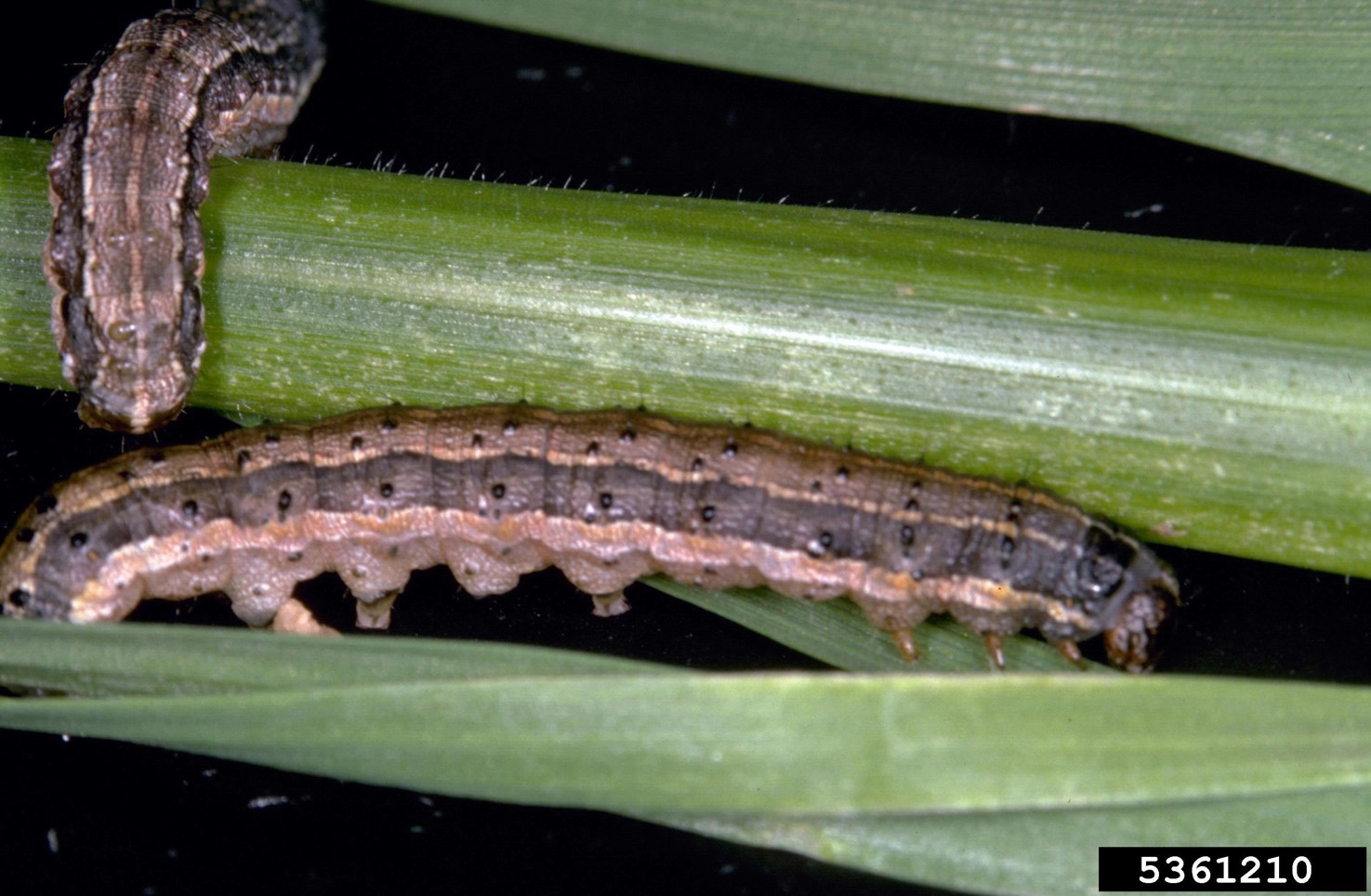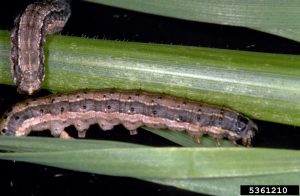
Tropical Sod Webworms Active in Local Lawns
Tropical sod webworms have been active in local lawns during the past few weeks here in North Florida. All of our warm season turf grasses are susceptible to these pests.
Sod webworms are not consistently a problem every year. Some years their numbers are low enough that they are not a problem. Some years we do not see them at all. Those years when they are a problem, it’s usually not until late summer and early fall that they become active and they may continue to feed on lawns until frost occurs.
Fall armyworms and sod webworms can attack at the same time. Sod webworms are the smaller of the two species, reaching a length of about ¾ inch. Armyworms grow to ½ inch in length. Both of these caterpillars are greenish when young, turning brown at maturity. Armyworms generally have a light mid-stripe along their back with darker bands on either side of the mid-stripe. Their feeding is similar, resulting in notched or ragged leaf edges.
Sod webworms tend to feed in patches while armyworms cause more scattered damage. Sod webworms feed at night while armyworms will be seen feeding during the day. Sod webworm caterpillars rest, curled up near the soil surface during the day. Adults of both species are fairly small grayish to brown moths.
If your lawn has damaged spots, look closely for notched leaf blades from their chewing. You may first notice a patch in your lawn that looks like it has been mowed extra low. Closer inspection reveals grass blades that are chewed away. Caterpillar feeding on zoysiagrass shows up more as translucent whitish tan areas on the surface of individual blades more so than as notched blades.
Fall armyworms and sod webworms can be controlled with the same insecticides as the other lawn insects. But you also may use insecticides that contain Bacillus thuringiensis; a bacterium that only kills caterpillars. Control should only be directed against the caterpillars, not the non-feeding, flying adult moths. Always follow the label directions and precautions for any pesticide you use.
For more information on lawn caterpillars contact the UF/IFAS Extension Office in your County or visit http://edis.ifas.ufl.edu/topic_tropical_sod_webworm.

